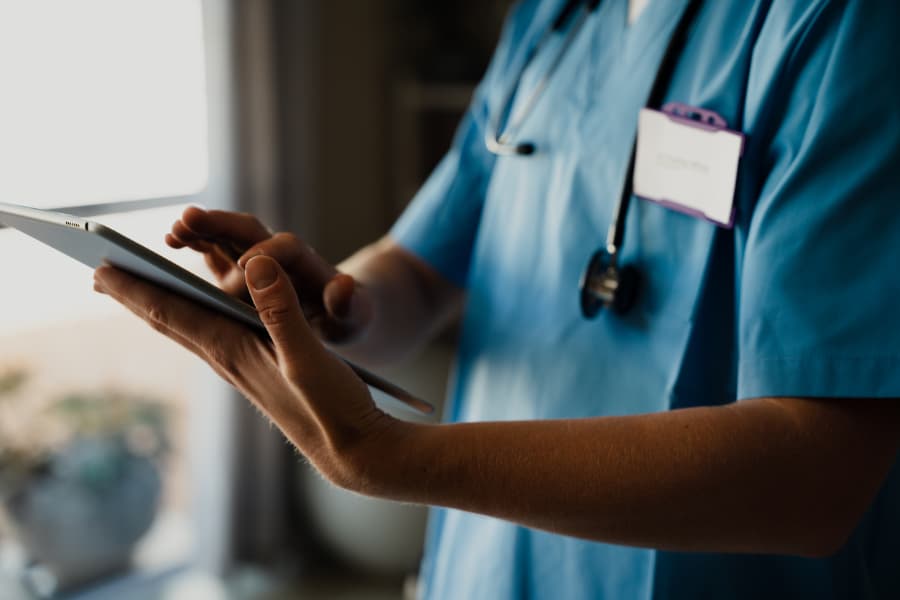 Medical assistants utilize a wide range of technologies, which may vary depending on their work location and specific role. Aspiring medical assistants should know about the technologies used, so they can decide if this career path is right for them and figure out the specialization they wish to concentrate on.
Medical assistants utilize a wide range of technologies, which may vary depending on their work location and specific role. Aspiring medical assistants should know about the technologies used, so they can decide if this career path is right for them and figure out the specialization they wish to concentrate on.
Medical assistant technology is essential for ensuring healthcare sites run smoothly. At Prism Career Institute, we offer a Medical Assistant program for students in Cherry Hill and West Atlantic City, New Jersey, and Philadelphia, Pennsylvania. Here, we discuss medical assistant technology and how our training helps students learn it.
The Role of Applied Medical Technology
Depending on the healthcare facility they work at, medical assistants typically perform both administrative and clinical tasks. These duties involve updating records, scheduling appointments, sending results, interacting with patients, and more. To keep up with these tasks, medical assistants must utilize various technologies, requiring proficiency in computer programs, applications, and medical tools.
With the increased technological presence in every industry, medical assistants are surrounded by more programs for maximum efficiency and time management. Today, medical records and charts are entirely digital and usually recorded in databases for Electronic Health Records (EHRs).
Students need to familiarize themselves with common healthcare technology as it evolves. Fortunately, the Medical Assistant program at Prism Career Institute provides aspiring medical assistants with digital training to boost their familiarity with computer tools, laboratories, and surgical equipment.
Technology Commonly Used by Medical Assistants
Medical assistants are responsible for many roles within a healthcare facility. The technology utilized depends on their duties and the location of their employment. Medical assistants are employed in two main settings: doctors’ offices and testing labs. Many technological advancements are used in these settings, including:
Medical Assistant Office Technologies
Medical assistants who work in office settings should become familiar with medical technology and equipment, including computers, printers, fax machines, telephones, and medical databases. They must clearly understand how to work with applications and programs, including medical databases. These are the primary method for documenting, storing, and accessing personal health information, so medical assistants must also know how to use them.
Medical assistants who pursue medical coding career paths also need to be familiar with billing and coding software and technologies. Specific certification is required to become a medical coder, but the career also requires medical coding credentials and proficiency with EHRs.
Medical Assistant Clinical Technologies
In clinical settings, medical assistants need to be comfortable using various laboratory equipment and technology. Medical assistants will need to know how to use hematology analyzers, urinalysis machines, and electrocardiogram (EKG) machines, as these are vital for patient health and accurate diagnostic results. Some medical assistants may pursue specialized pathways in phlebotomy, which also requires specific knowledge of related equipment.
Remaining at the forefront of the healthcare field requires medical assistants to continuously seek learning opportunities, including updating their knowledge of new tools and technology. Therefore, medical assistants should continue to adapt and change their approaches to technology as the healthcare field advances. Many institutions and healthcare facilities continue to inform their employees about advancements in medical technology.
Some medical assistants continue to attend workshops and earn certifications after graduation. At Prism Career Institute, we offer training to streamline engagement with tools and technology. Embracing these opportunities is important for patient care.
Become a Medical Assistant and Strengthen Your Technology Skills
Modern patient care coordination and medical assistance both rely on technological advancements, so finding training that teaches these skills is important. Consider the Medical Assistant program at Prism Career Institute, which is taught by highly qualified instructors with years of experience in the healthcare field. Our comprehensive program and courses are perfect for students interested in a medical assistant career, as we train them in technology, medical records management, and other duties related to patient care.
Our program can be completed within 40 weeks and 420 lecture hours (108 of which are online). In this time, students gain direct experience with patient care, engage in training courses focused on technology and administrative skills, and complete a 150-hour medical assistant externship.
If medical assistant technology interests you, consider applying at one of Prism Career Institute’s locations in Cherry Hill and West Atlantic City, NJ, and Philadelphia, PA. The daytime program is available at all three locations, while our evening program is available at our NJ campuses. For more information regarding medical assistant career training or the other programs we offer, contact us today.
